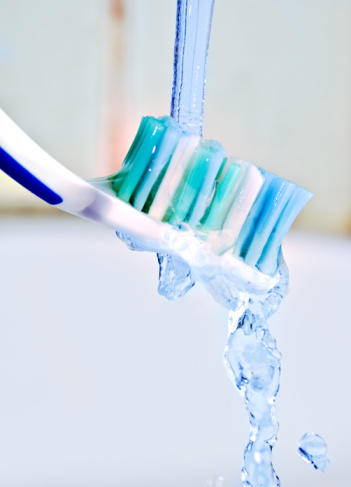Your toothbrush is loaded with germs, one uncovered toothbrush can harbor more than 100 million bacteria, including E. coli bacteria, which can cause diarrhea, and staphylococci bacteria. In fact, plaque—the stuff you’re removing from your teeth—is bacteria, so you’re actually putting bacteria on your toothbrush every time you brush your teeth.
When was the last time you stopped to think about the germs lingering in your bathroom and landing on your toothbrush? We’re not just talking about germs from a cold, we’re talking about the germs, bacteria and particles floating around your bathroom like the ones coming from your toilet or the mold in your shower.
Are you grossed out yet? You should be! Thankfully there are ways to minimize your exposure to unwanted particles on your toothbrush. First off, make sure to cap your toothpaste, not your toothbrush. Covering the brush can trap moisture and encourage bacteria growth, so it’s important to let it dry out every time you brush your teeth. But, do cap your toothpaste, so nothing else gets into the tube.
Most bathrooms are small. And in many homes, the toilet is pretty close to the bathroom sink where you keep your toothbrush. With every toilet flush there’s a spray of bacteria in the air. And, you don’t want the toilet spray anywhere near your open toothbrush. The airborne particles from flushing your toilet can travel up to 6 feet, so do not brush within 6 feet of a toilet. Instead try moving your toothbrush to the opposite side of the bathroom to minimize the risk to your toothbrush and your mouth! If you have questions about brushing your teeth or oral hygiene give Austin family dentist a call today!
Once you’ve moved your toothbrush away from the toilet, here are a few other storage tips to keep your brush as germ-free as possible:
–Wash off your toothbrush thoroughly with tap water every time you use it.
–Make sure your brush has a chance to dry thoroughly between brushings. Avoid using toothbrush covers, which can create a moist enclosed breeding ground for bacteria.
–Store your toothbrush upright in a holder, rather than lying it down.
–No matter how close you are to your sister, brother, spouse, or roommate, don’t ever use their toothbrush. Don’t even store your toothbrush side-by-side in the same cup with other people’s brushes. Whenever toothbrushes touch, they swap germs.
The best way to limit the bacteria on your toothbrush is to replace it on a regular basis. The American Dental Association recommends throwing out your toothbrush every three to four months. If the bristles become frayed, you’re sick, or you have a weak immune system, throw it out even more often. If you use an electric toothbrush, throw out the head as often as you’d discard a disposable toothbrush.
Every time you’re tempted to skip brushing and flossing your teeth, remember how many bacteria lurk in your mouth—and what they can do. Make sure you’re brushing and flossing as often as possible to eliminate bacteria and take care of that toothbrush, so it can take care of your smile!
For more on toothbrush hygiene, give us a call!

